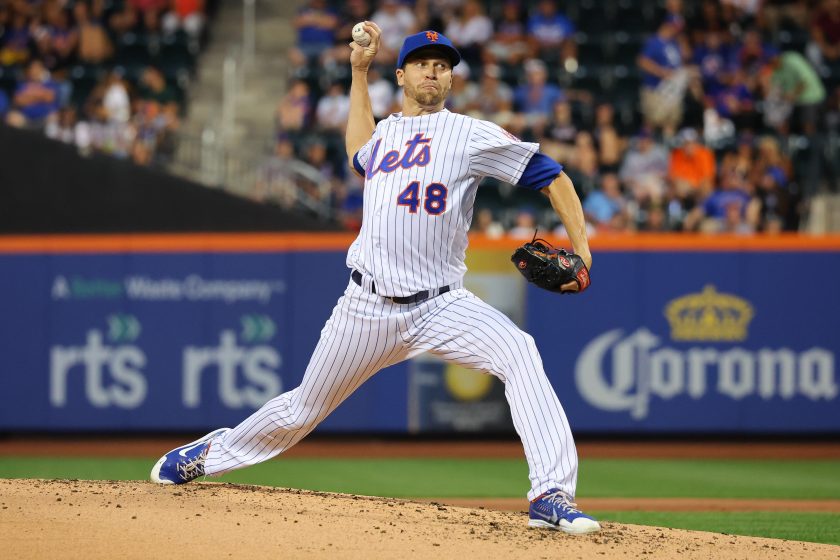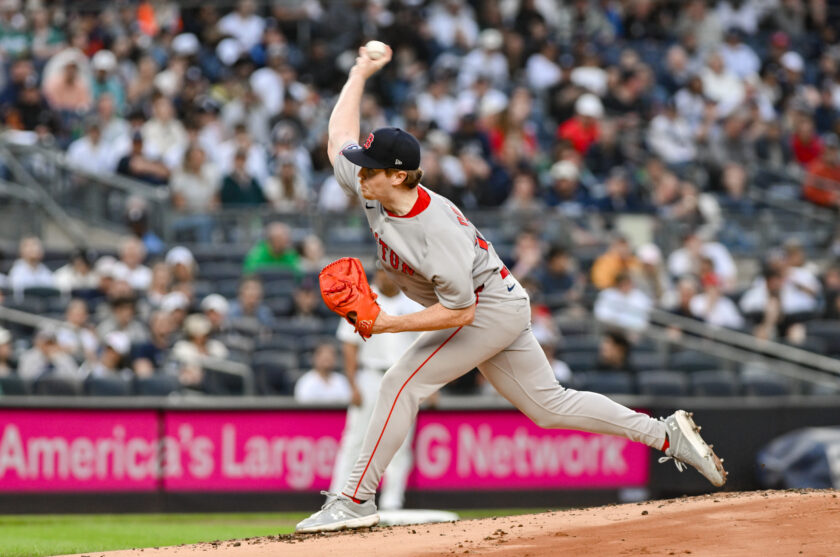Clayton Kershaw’s compliment of Mets’ Jacob deGrom is spot-on

Looking at a ballplayer’s numbers can speak volumes, but not as much as actually seeing them perform in person. Clearly, this is what happened for Clayton Kershaw when he watched Jacob deGrom pitch for the Mets during their series at Citi Field this week.
Despite deGrom continuing to get older (as, you know, we all do) and dealing with multiple injuries over the past 12 months, Kershaw is amazed at how he’s remained so dominant. Here’s what he had to say about the Mets’ ace (via the New York Post):
“I think it’s probably one of those things that you can’t take much from, because it doesn’t happen. You’re kind of defying evolution a little bit.”
It’s the whole “defying evolution” bit that really stands out. This isn’t just coming out of nowhere, either. The Dodgers’ southpaw knows a thing or two about being among baseball’s elite. He’s a first-ballot Hall of Famer upon becoming eligible, and his peak was one of the most dominant we’ve seen from any pitcher in this generation.
Between 2011 and 2017, Kershaw posted a 2.10 ERA and 0.91 WHIP with a 10.1 K/9 and 1.8 BB/9 over 1,452 innings pitched. He posted a 118-41 record in the process and finished outside the top three of NL Cy Young Award voting just once (fifth in 2016) while taking home the honors three times in four years. Oh, and the last time Kershaw won the Cy Young, he was also the NL MVP in 2014.
Before Jacob deGrom’s 2021 campaign was cut short, he was enjoying one of the most dominant starting pitcher seasons ever. In just 92 innings of work, he owned a 1.08 ERA and 4.9 fWAR. After not pitching in a big-league game for more than a full calendar year, it would’ve been understandable to see the right-hander be a little rusty in his first few appearances. That hasn’t been the case, as he’s back to his usual dominant self.
Going back to Kershaw’s “defying evolution” comment, it really comes true when peeking at deGrom’s velocity progression. He’s a starting pitcher in his mid-30s, yet he’s continuing to find ways to improve his arsenal.
For example, check out his season-long average fastball velocity since he debuted in 2014:
- 2014: 93.5 mph
- 2015: 95.0
- 2016: 93.4
- 2017: 95.2
- 2018: 96.0
- 2019: 96.9
- 2020: 98.6
- 2021: 99.3
- 2022: 99.4
Yes, you’re reading that right. DeGrom’s average fastball velocity has increased each year since 2016. His slider velocity has gone on a similar trajectory (although not as linear):
- 2014: 87.0 mph
- 2015: 89.7
- 2016: 88.6
- 2017: 89.3
- 2018: 91.1
- 2019: 92.5
- 2020: 92.5
- 2021: 91.6
- 2022: 93.1
There are some pitchers who’d love to throw their fastball 93.1 mph, but that’s just deGrom’s slider. This is most certainly not a normal progression for a hurler at his age, so it seems like Kershaw hit the nail on the head with his opinion.
More on ESNY:
• Greg Schiano’s 3rd season at Rutgers will be defined outside the lines
• Yankees call up SS prospect Oswald Peraza
• Giants or Jets: Who will return to NFL Playoffs first? (POLL)
• Three keys to Mets’ Mark Canha enjoying a huge August
• Knicks strike out on Donovan Mitchell deal; Jazz trade him to Cavaliers
Matt Musico can be reached at matt.musico@xlmedia.com and you can follow him on Twitter: @mmusico8.
Matt Musico is an editor for ESNY. He’s been writing about baseball and the Mets for the past decade. His work has been featured on numberFire, MetsMerized Online, Bleacher Report, and Yahoo! Sports.






